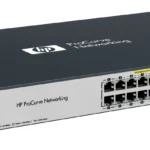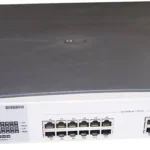When it comes to network printing, understanding the ports used by your Hewlett Packard (HP) printer is essential. Each printer model may use different ports for network communication, and knowing which ports are used can help troubleshoot connectivity issues and ensure smooth printing operations.
What Ports Do Network Printers Use?
Network printers utilize various ports for different services and protocols. The following table provides a list of services commonly used in network printing, along with the corresponding UDP and TCP port numbers:
| Service Name | UDP Port | TCP Port |
|---|---|---|
| Services for Macintosh (uses AppleTalk) | 201, 202, 204, 206 | 201, 202, 204, 206 |
| Internet Printing Protocol (uses HTTP) | 80 | 80 |
| NWLink (uses IPX/SPX) | 213 | 213 |
| LPDSVC (accepts LPR) | 515 | 515 |
| LPR Port (sends LPR) | 721-731, >1023 | 721-731, >1023 |
| Server (using SMB) | 137, 138 | 139 |
| Server (using RPC) | 530 | 530 |
| Standard Port Monitor (using SNMP) | 161, 162 | 161, 162 |
| Standard Port Monitor (using LPR) | > 1023 | > 1023 |
| Standard Port Monitor (using RAW) | 2000, 2501-2503, 3001, 6869, >=9100 | 2000, 2501, 2503, 3001, 6869, >=9100 |
Please note that the availability and activation of these services may vary depending on the printer model and the type of clients submitting print jobs to the print server. It is recommended to consult your printer manufacturer for the exact port numbers used by your specific HP printer.
Why Are Network Printer Ports Important?
Understanding the network printer ports is crucial for several reasons:
Troubleshooting Connectivity Issues
When experiencing connectivity problems with your HP network printer, knowing the correct ports to check can help identify the root cause. By ensuring that the required ports are open and accessible, you can eliminate port-related issues and focus on other potential causes of the problem.
 Hewlett packard pro curve m j9145a: powerful networking solution
Hewlett packard pro curve m j9145a: powerful networking solutionNetwork Configuration
Network printers often require specific port configurations to function properly. By understanding the ports used by your HP printer, you can ensure that the necessary ports are open and properly configured on your network infrastructure, including firewalls, routers, and switches.
Security Considerations
Knowing the ports used by your network printer is essential for maintaining network security. By understanding which ports are required for printing operations, you can implement appropriate security measures, such as firewall rules and access control, to protect your printer and network from unauthorized access and potential security threats.
Frequently Asked Questions
- Q: What if I don't know the port numbers used by my HP printer?
- Q: Can I change the default ports used by my HP printer?
- Q: Are the port numbers the same for all HP printer models?
A: If you are unsure about the port numbers used by your HP printer, it is best to contact the printer manufacturer or refer to the printer's documentation for the specific port information.

A: The ability to change the default ports used by your HP printer may vary depending on the printer model and the printer's firmware. It is recommended to consult the printer's documentation or contact the manufacturer for guidance on changing port settings.
 Hp procurve switch 2424m: performance & security features
Hp procurve switch 2424m: performance & security featuresA: The port numbers used by HP printers may vary depending on the printer model, firmware version, and network configuration. It is important to refer to the specific documentation for your printer model or contact the manufacturer for accurate port information.
In conclusion, understanding the network printer ports used by your Hewlett Packard (HP) printer is crucial for troubleshooting connectivity issues, network configuration, and ensuring network security. By being aware of the required ports and maintaining proper port configurations, you can enhance the performance and reliability of your HP printer on the network.

